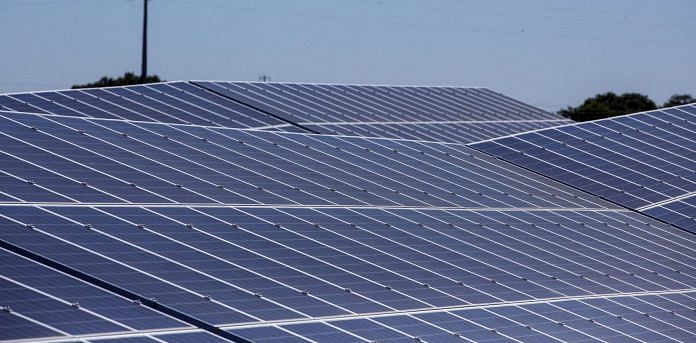New Delhi: It will be a farm where Kashmir’s famous saffron will be cultivated, but also double as a solar power project that is expected to generate up to 10 megawatts of electricity for the Valley.
Jammu & Kashmir is set to have India’s first solar “agro-photovoltaic” power project — where a solar project will be set up on a 250-acre area (just over 100 hectares) that will simultaneously be used to cultivate saffron, ThePrint has learnt.
The project will come up in Pampore — known for high-quality saffron — and cost approximately Rs 50 crore, sources in the J&K administration said. The project is expected to yield saffron worth an estimated Rs 55 lakh every year.
The land, sources said, currently hosts defunct gas turbines from a power plant where LPG was used to generate electricity. This plant was discontinued as it was turning out to be costly and the turbines have been lying idle for the last 10-12 years, the sources added.
Work on the new project, they said, is expected to begin by the end of this month.
Speaking to ThePrint, J&K Principal Secretary for Power and Information Rohit Kansal confirmed the project is on the anvil. “We will try to ensure that we do not lose out on precious saffron cultivation land in Pampore, while simultaneously making use of the same to generate solar power,” he said.
“The Jammu and Kashmir Power Development Corporation is in talks with the Solar Energy Corporation of India to help us set up this plant,” he added.
The Solar Energy Corporation of India is a central public sector undertaking under the Union Ministry of New and Renewable Energy.
A source in the J&K administration said the plant will be the first-of-its-kind solar project in the world.
“Usually, barren land is required to set up a solar project, but here, we will do it in such a way that saffron cultivation will take place alongside, under the panels, ensuring better and maximum use of that land,” the source added.
“A draft proposal for the same has been prepared. It has all the details of how the structure of the solar panel will be, the distance between the panel and saffron flower,” the source said.
Also Read: India seeks cheaper renewable energy contracts to spur projects
A bifacial plant
The solar plant, sources said, will be “bifacial”, which means both sides of a panel will produce electricity.
“It will have saffron flowers on the bed and solar panels (on the) top. According to the current plan, there is a gap of around 7-8 metres between two panel rows, having a ground clearance of around 500 mm,” the aforementioned source said.
“With this plan, even if we use 40 per cent of the field area for solar panels, along with it, there will be an average productivity of 5 kg saffron per hectare, which will give an annual revenue of approximately Rs 55 lakh,” the source added.
“Moreover, this will save water as wastewater from module-washing will be used for irrigating saffron fields,” the source said.
The project, sources said, will take six to nine months to complete, and the electricity it generates will cost Rs 3-Rs 3.5 per unit.
“The draft plan is in the pipeline and we expect the work to start soon. Work is expected to start by the end of April and it will be completed within six to nine months from now,” the source said.
Edited by Sunanda Ranjan
Also Read: How India can kickstart a green energy revolution







I wonder why India is not using Solar Trees. This way no plants / trees need to be cut.